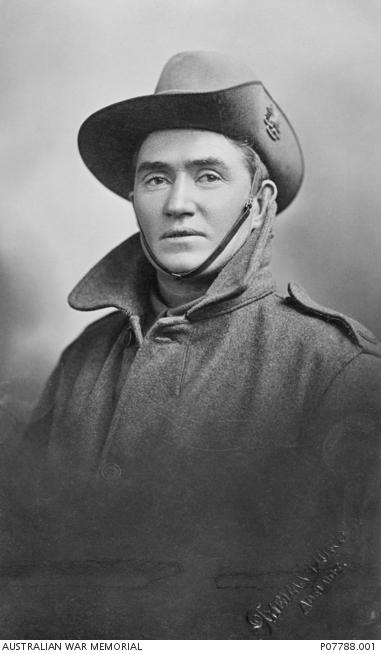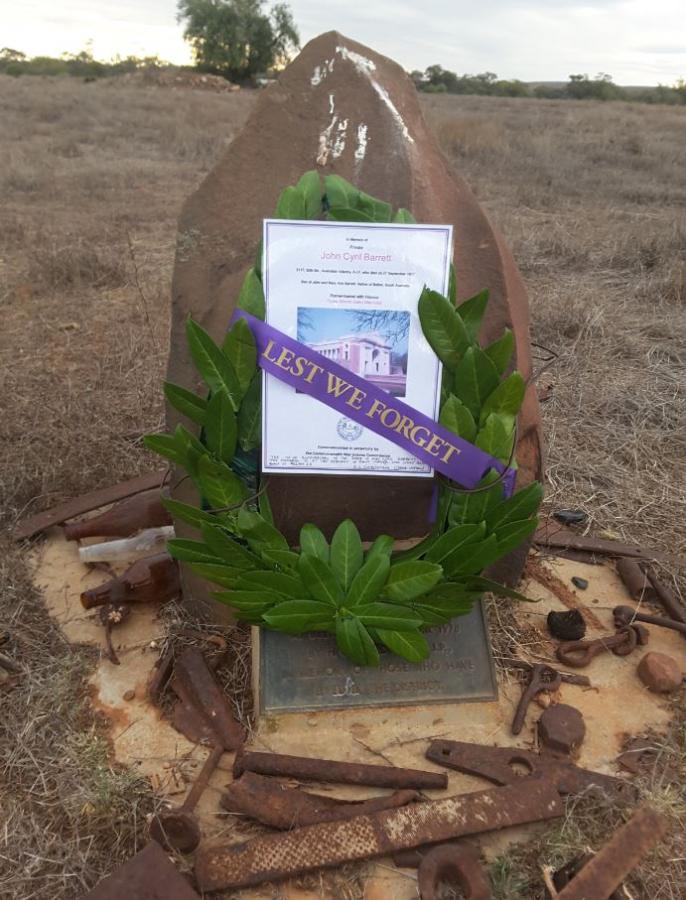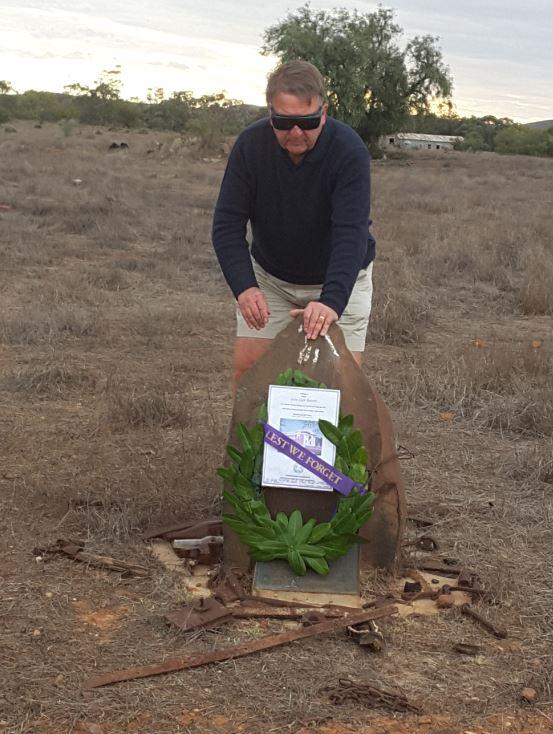Remembering John Cyril Barrett

Private John Cyril Barrett was killed in action at Polygon Wood.
More than 40 years ago, Tony Schar made a promise to commemorate his great-uncle’s service during the First World War. Last year, on the 100th anniversary of his great-uncle’s death, he honoured that promise, travelling to Belton in South Australia to lay a wreath in memory of John Cyril Barrett, who enlisted in the Australian Imperial Force and served as a private with the 50th Australian Infantry Battalion.
A farmer prior to enlistment, Barrett embarked with the 8th Reinforcements from Adelaide on HMAT Berrima on 16 December 1916. Less than a year later, he was killed in Belgium in the fighting at Polygon Wood during the Third Battle of Ypres on 27 September 1917. He was just 25 years old, and his body was never found. His family back home in Australia never learnt how he died, other than that he was killed in action. Today, he is commemorated on the Menin Gate Memorial to the Missing at Ypres, which bears the names of almost 55,000 soldiers, including 6,000 Australians.
“When my father died in 1972, John’s siblings asked if I would get over there and go to the Menin Gate in Belgium and lay a wreath to commemorate the 100 years since he died in the mud at Polygon Wood,” Schar said. “But I couldn’t travel over by plane. My wife Ida has leukaemia, in remission, and we were advised by the doctors not to fly.”
Instead, Schar commemorated the 100th anniversary of John Cyril Barrett’s death in Belton where Barrett and his siblings were born.
“It was a promise that I said that I would keep … [and] on 27 September 2017, my wife and I went to Belton and commemorated the 100th anniversary of John Cyril Barrett’s death,” Schar said.
“The town itself is a ghost town, and Belton today is only marked by … a cairn of stones with a government bronze plaque that identifies the original town. From 1890–1905, there were 200 families, each with a 100 acres, and they cropped wheat, [but] sadly, the rains ceased and all families moved from the district.
“John [and his family] went down to Mortlock near Port Lincoln, and then to Mount Cooper, near Collie, and that’s where they were when they went off to the First World War.

“My grandmother said they never dreamt that where they were going to was so far away, or how long it would take to get there, or what was going on. It was all King and country and off they went …
“My grandfather, August Schar, who married John Cyril Barrett’s sister Rose, was in the same area, and tried to enlist in the war at the same time at the same spot. He was the number one rifle shooter, but he was rejected because of his glasses, even though they both wore glasses …
“John Cyril Barrett had never even picked up a rifle when he enlisted. But that was life. It was a different world …
“He sent cards home signed ‘JCB from Abroad’, as well as a photograph taken in London … In one letter he wrote, ‘It is rainy here today, but that is nothing for this part of the world’. [And] on July 29, 1917, he wrote to his ‘dear mother’ saying, ‘I’ll never forget you,’ and, ‘I went to confession last night.’
“On 7 November 1917, they received a telegram from the Premier’s office with expressions of sympathy, saying a man can render no greater service than to die for his country.”
It was little comfort to Barrett’s parents, John and Mary, who were left devastated by their son’s death. His spectacles and rosary beads were returned in a package containing his personal effects, but all that his father really wanted returned was his son’s watch which had sentimental value to the family. He wrote to officials in 1918 asking about the watch, but never received a reply. The watch, like his beloved son, was gone.
For Tony Schar, the trip to Belton to commemorate his great-uncle’s service and sacrifice on the 100th anniversary of his death was particularly special.
“I have honoured a long-time promise,” Schar said. “And now hopefully all John’s family is at peace.”

Tony Schar commemorated the 100th anniversary of John Cyril Barrett’s death in Belton where Barrett and his siblings were born: "Now hopefully all John’s family is at peace.”